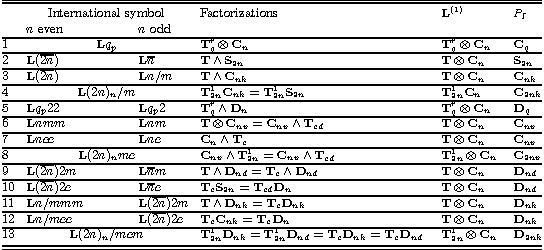
| Line groups: Symmetry of Polymers and nanotubes |  |
| For each of 13 family of the line groups different factorizations in the form L=ZP are given (Z is infinite cyclic group of generalized translations - pure translations T, screw axis Trq or glide plane Tc, and P is axial point group). The maximal first family subgroup and isogonal point group PI, are presented (n is the order of the principle rotational axis of P, andq of PI). Here, Tcd denotes the glide plain bisecting the angle between vertical mirror planes in P. For the groups of the families 1 and 5, q is multiple of n (p from the international symbol is function of n, q and r) |
 |
The line group symmetry is basis for the research of diverse physical properties of nanotubes polymers (phase transitions, selection rules, physical tensors). Rolling up relation to the layer groups enabled to find the line group symmetry of various nanotubes.
The computer program POLSym®
enables
the efficient analysis of the polymer properties, implementing their symmetry
through the modified group projector technique. Such studies are easily
performed even for complex polymers as the DNA
macromolecule.